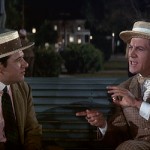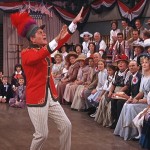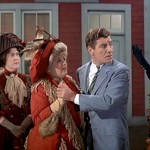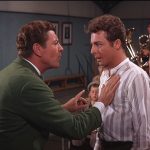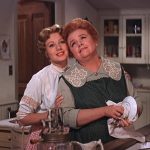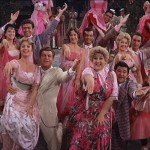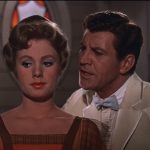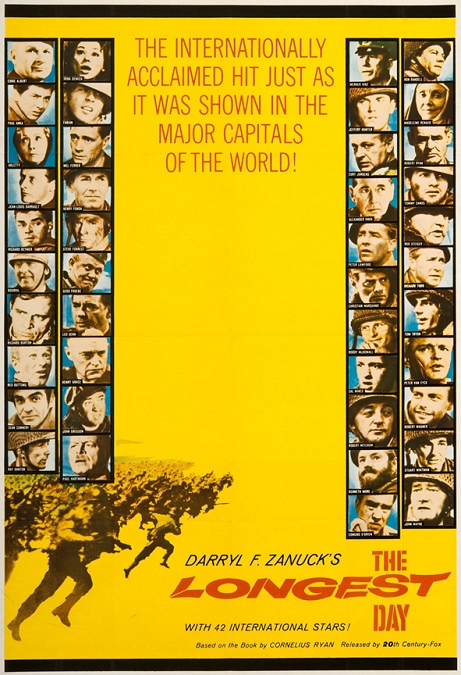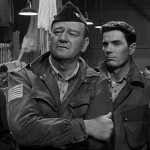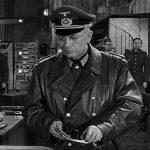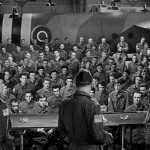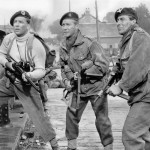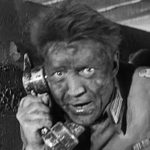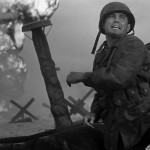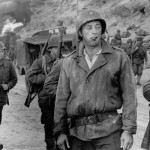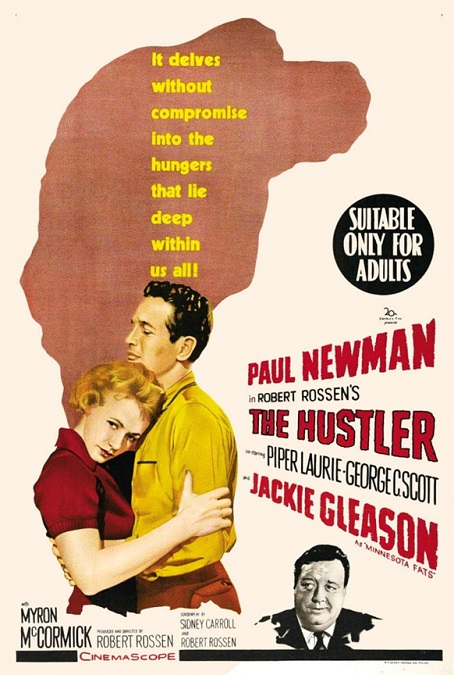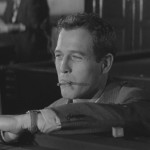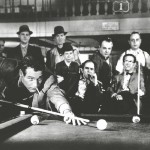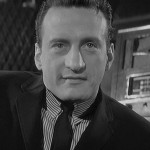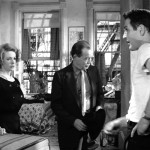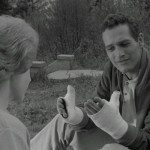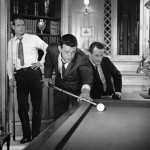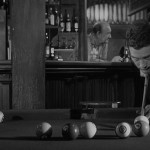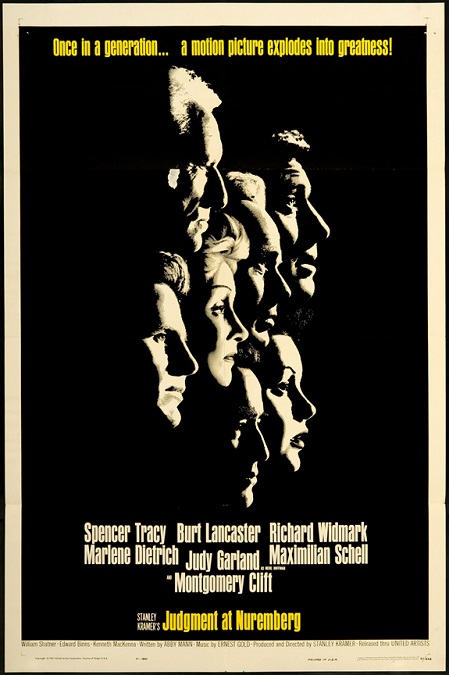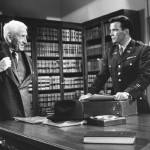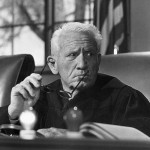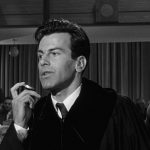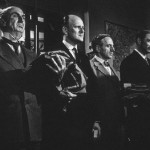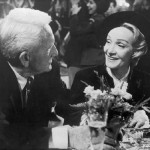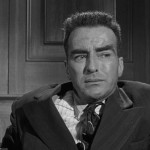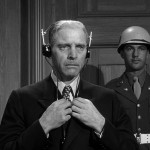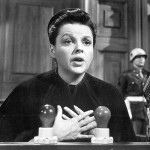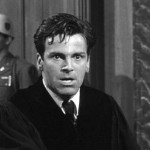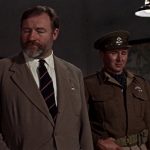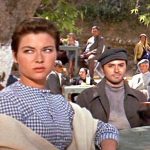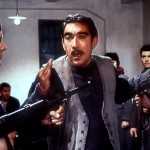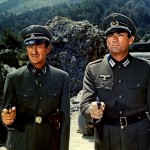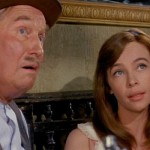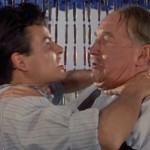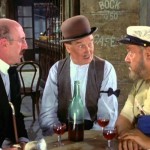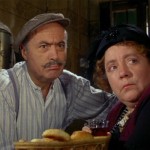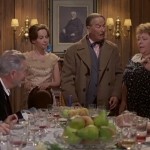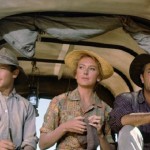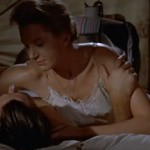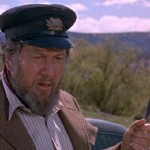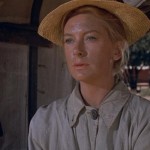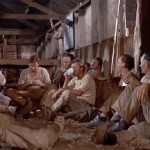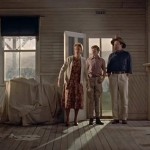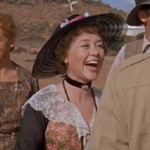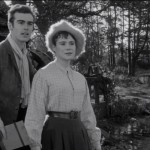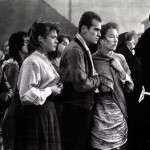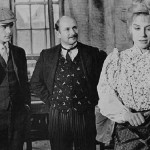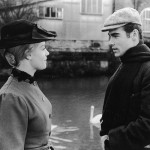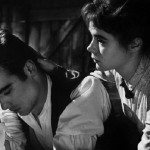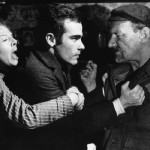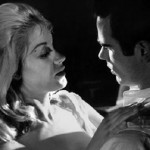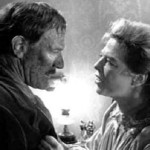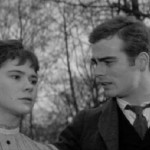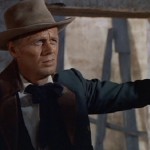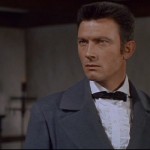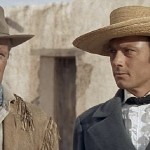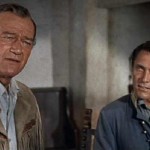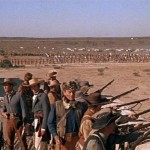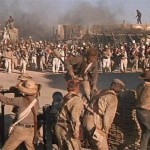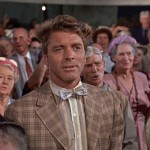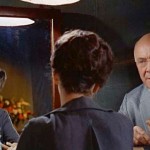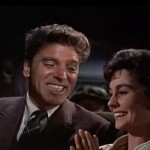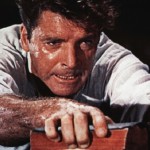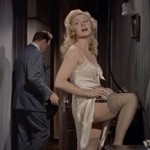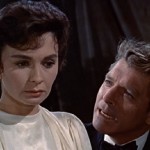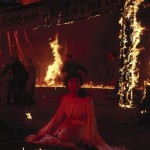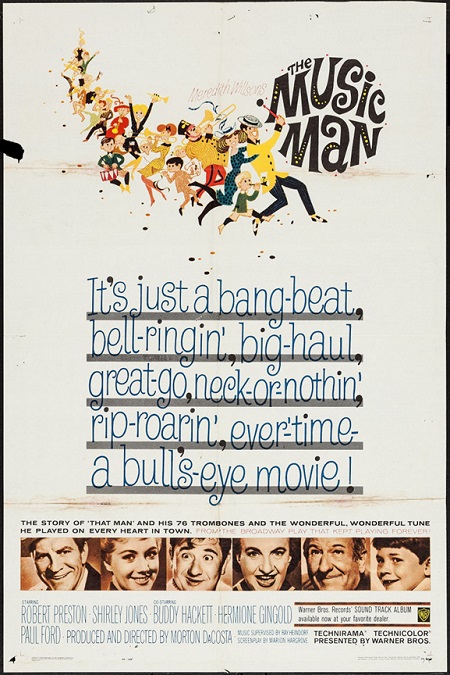
The Music Man – 1962
The first thing that comes to mind when I think about The Music Man is how I always enjoyed watching it when I was a child. I really loved all the wonderful music and the bright costumes. I loved the film’s light-hearted air and the feel-good ending. I’ve also seen it a few times as an adult, and I’m still mesmerized by the energetic dancing and the vaguely campy comedy. It is a film that can’t help but leave a smile on my face.
The film was perfectly cast with Robert Preston playing the lead, Professor Harold Hill, a traveling sales man and successful con-artist. His scam is simple. He tells people he is selling bands. He collects money for instruments and uniforms, and promises to organize the young boys in a town into a top-notch marching band. The trouble is, he doesn’t know a thing about music. Then, when he has everyone’s money, and has given them cheap instruments and ill-fitting uniforms, he leaves town with his pockets full of cash.
However, in River City, Iowa, he has bitten off more than he can chew. In an effort to cement his scam of the whole town, he charms the beautiful young librarian, who also happens to be a widow. Shirley Jones plays Marion Paroo, the woman who refuses the smooth salesman’s advances and quickly learns that he is a fraud.
Her younger brother Winthrop is played by a 7 year old Ron Howard. The child has emotional issues over the death of his father and rarely speaks to anyone. When he does, he has a very prominent lisp. But when Hill convinces Mrs. Paroo, his mother, played by Pert Kelton, that he has the makings of natural-born coronet player, Winthrop gets so excited, he starts talking. Now, believe it or not, this is the basis for most of the film’s emotional content. Hill becomes a sort of a father figure to the boy, allowing him to overcome his mental blocks. And when his healing process becomes evident, the cold heart of his sister warms until she falls in love with Hill, knowing perfectly well what kind of a man he truly is.
Her reasoning is perfectly reasonable, from an emotional standpoint. Sure, he was a liar and a con-artist, but from a certain perspective, he actually made good on all his promises. When he promised the town a band, what he was actually promising them was something to hope for, something to dream about, something to fall in love with. He gave the town excitement, waking them up from the drudgery of their day to day lives. He gave them happiness.
The music by Meredith Wilson is wonderful and memorable. Even people who have never seen the show know the song 76 Trombones. But I also loved Ya Got Trouble, Pick-a-Little, Talk-a-Little, Marion the Librarian, The Wells Fargo Wagon, and Shipoopi. And who can forget the softer love songs like Goodnight My Someone and Being in Love? This film was nominated for 6 Oscars and took home only 1: Best Musical Score.
Aside from the main cast, comedian Buddy Hackett played Hill’s partner in crime and friend, Marcellus Washburn. He was wonderful in the song Shipoopi. Timmy Everett and Susan Lucky played the cute young couple, Tommy Djilas and Zaneeta Shinn. Paul Ford played Mayor Shinn. The actor had a talent for constantly bumbling words and phrases in ways that were hilarious. He’d say “I’ll settle your hash as soon as I get these premises off my oldest girl!” And I have to make special mention of Hermione Gingold who was absolutely wonderful as Eulalie Mackechnie Shinn, the Mayor’s wife. She was comedy gold in her stuffy but likable role. She was overwhelmingly nose-in-the-air and pretentious, but she played it all tongue-in-cheek. I love the Grecian Urn dances!
Now, I know I probably shouldn’t do this, but I have to do a little movie bashing. In 2003 a version of The Music Man was filmed as a made-for-TV movie. It starred Matthew Broderick, Kristen Chenoweth, Victor Garber, and Molly Shannon. Without putting too fine a point on it, it was horrible, especially when put next to the 1962 version. And as much as I like Broderick, his performance had no energy, no charisma, and not an ounce of the pizzazz that a flashy traveling salesman like Harold Hill needed to have. He sounded like he was reading his lines out of a phone book. I only mention it because if you want to watch The Music Man, avoid the 2003 version. It was disappointing on so many levels. It doesn’t hold a candle to the original.

